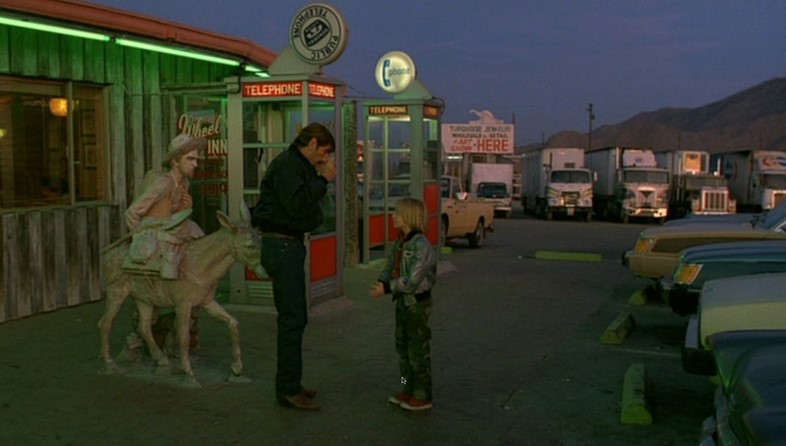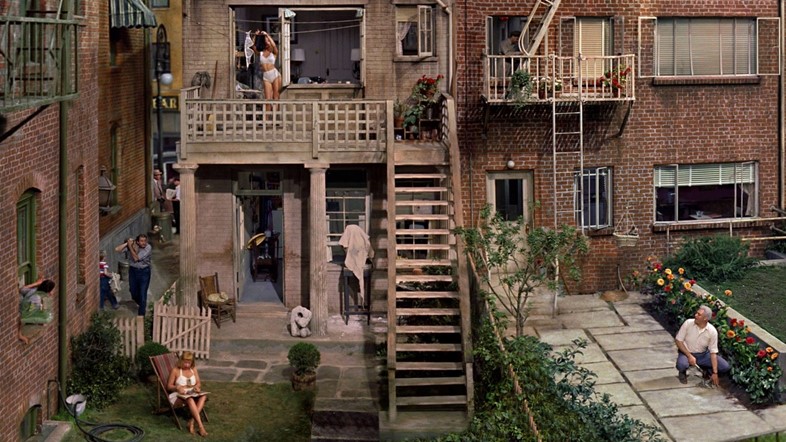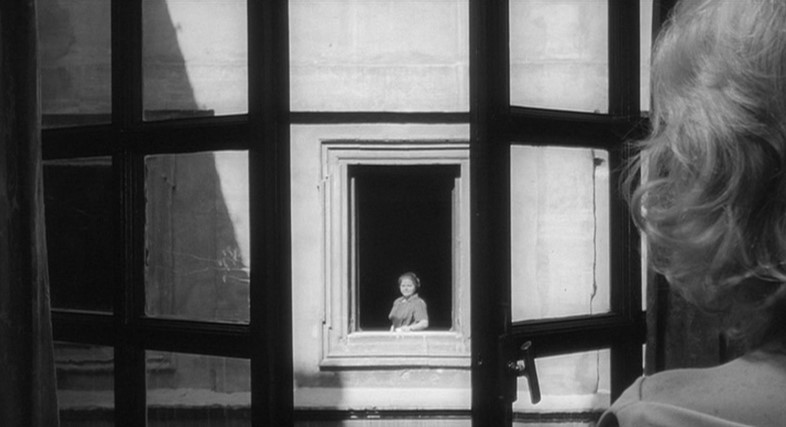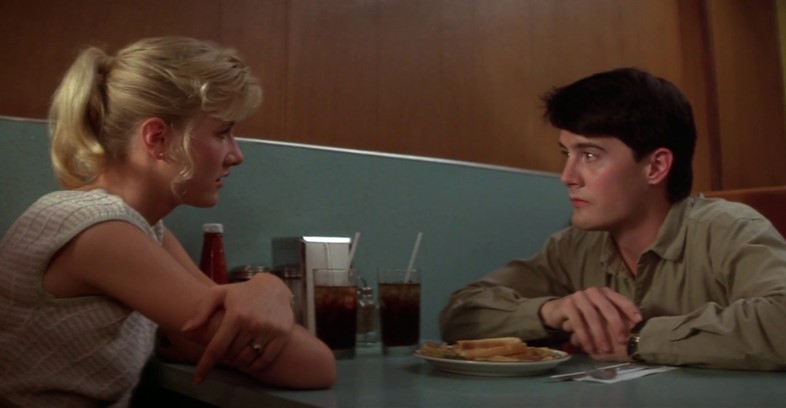As a new exhibition of the legendary American painter’s work opens at Fondation Beyeler, we examine his profound cinematic legacy on directors Wim Wenders, David Lynch and more
- TextDaisy Woodward
“All the paintings of Edward Hopper could be taken from one long movie about America, each one the beginning of a new scene,” writes German auteur Wim Wenders in his 2015 book, The Pixels of Paul Cézanne: And Reflections on Other Artists. “Each picture digs deep into the American Dream and investigates that very American dilemma of appearance versus reality.” Indeed, Hopper’s vision of modern life in America – defined by the artist’s unique pictorial vocabulary, pioneering use of colour, and mastery of light and shade – has had an immeasurable impact on visual culture and how we envisage the United States.
On top of that, Hopper encapsulated the loneliness of urban existence like few had before him. “[He] continually reinvented the story of lonely people in empty rooms, or couples who live separate lives together without speaking,” to quote Wenders again. “In the background are the impenetrable façades of a hostile town or an equally unapproachable landscape. And always windows! Outside and inside are the same inhospitable and unreal living spaces, radiating a similar sense of strangeness.”
Wenders is one of countless filmmakers to have been influenced by Hopper (himself a staunch cinema fan), something recently reaffirmed in a short film by the director, commissioned by the Fondation Beyeler in Basel to accompany its remarkable new exhibition of Hopper’s American landscapes. Titled Two or Three Things I Know About Edward Hopper and shot during a recent road trip across the States, the captivating 3D film brings Hopper’s world to vivid life in true Wenders style. Here, in celebration of the exhibition’s opening and Hopper’s powerful cinematic legacy, we examine the great artist’s influence on five master filmmakers.

Wim Wenders
Wenders’ first US production, Hammett (1982) – which follows the detective-story writer Dashiell Hammett as he becomes ensnared in a real-life mystery – leans heavily on Hopper imagery in its noir-esque portrayal of America. Keen-eyed Hopper fans will spot the similarities between a number of shots and atmospheric early drawings by the artist, including Night Shadows and House Tops (both 1921).
Wenders’ most visually enticing depiction of America, meanwhile, comes courtesy of his 1984 road trip classic Paris, Texas which is similarly brimming with Hopper-style Americana, from gas stations to diners, and dusky rural towns to vast, modern cityscapes. Not to mention Harry Dean Stanton’s bereft, achingly isolated protagonist Travis, who could have wandered straight off a Hopper canvas. Other of Wenders’ films notably indebted to the painter include The American Friend (1977), Don’t Come Knocking (2006) and, of course, The End of Violence (1997), which includes a famous recreation of the Nighthawks diner.

Alfred Hitchcock
Hitchcock and Hopper were very much alike in their love of suspense and their interest in themes of voyeurism, loneliness and isolation – not to mention windows. Indeed, although Hitchcock famously paid tribute to the painter in his 1960 slasher, Psycho, basing the eerie Bates house on the mansard-roofed mansion in Hopper’s acclaimed painting House by the Railside (1925), it is in Hitchcock’s 1954 masterpiece Rear Window that Hopper’s influence can be most felt.
It is the story of Jeff (James Stewart), a housebound photojournalist with a broken leg, who whiles away his days spying on his neighbours in the opposite apartment block with a zoom lens. The building’s inhabitants are presented as strange, Hopper-like caricatures, each framed by their respective windows as they carry out their peculiar daily routines. When Jeff spots what appears to be a murder, however, what he can’t see becomes more suggestive than what he can – a quinessential Hopper trope (think of the woman in Cape Cod Morning staring anxiously out of her window at something off canvas).

Michelangelo Antonioni
Another fêted art house director who often drew from Hopper was Michelangelo Antonioni, who described his own filmmaking process as a mode of “painting”, denoting his obsession with colour, clever camera angles and well-framed compositions. His so-called Alienation Trilogy (made between 1960 and 1962 and comprising the films L’avventura, La Notte and L’eclisse) offers poignant reflection on the subject of “modernity and its discontents” – namely social detachment, as evoked by the films’ many lonely figures, frequently depicted in secluded, Hopper-like set-ups.
Meanwhile, Antonioni’s first American production, Zabriskie Point (1970) – a surreal, visually delightful investigation into 1960s counterculture, set predominantly in the California desert – deftly plumbs Hopper’s colourful conjurings of a swiftly modernising America and man’s impact on the country’s expansive landscape.

David Lynch
David Lynch, the master of cinematic disquiet, is, unsurprisingly, another self-professed Hopper-head, who often stresses the impact of painting – most prominently that of Hopper and Francis Bacon – upon his work. “For mood and painting quality, I like Edward Hopper,” he told artnet News’ Andrew Goldstein in an interview last year. A Hopperian moodiness, voyeurism and dramatic use of light and shade prevails throughout his 1986 thriller Blue Velvet, in particular, which peels back the veneer of white-picket-fence suburbia to reveal some truly sinister goings on beneath.
In the third season of Twin Peaks, meanwhile, which aired in 2017, Lynch made the most of his creative carte blanche, dropping in Hopper references left, right and centre – excerpts from Office in a Small City (1953), Gas (1940), Summer Evening (1947) and New York Movie (1939) all feature, as showcased in this excellent short by VoorDeFilm.

Jim Jarmusch
“[Jim Jarmusch] is a romantic, who sees America as a foreigner might – as a strange, haunting country where the urban landscapes are painted by Edward Hopper and the all-night blues stations provide a soundtrack for a life.” So said the late film critic Roger Ebert in his 1990 review of Jarmusch’s Mystery Train, a heady triptych of stories that unfold over the course of the same night in Memphis, rendered in a distinctly Hopper-esque palette. But the statement could just as easily be applied to the rest of Jarmusch’s oeuvre, beholden as it is to the painter’s view of America – from the eerie gothicism of New Orleans that Jarmusch presents in Down by Law (1986) to the profound sense of urban desolation that pervades his meandering, monochrome drama, Stranger Than Paradise (1984).
Edward Hopper is at Fondation Beyeler, Basel until May 17, 2020.











